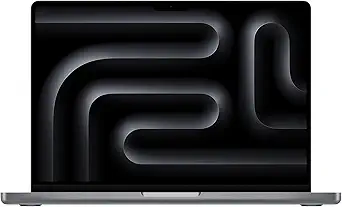
A Deep Dive into Your Professional Needs
For architects, a laptop is not just a tool for communication or entertainment—it’s a powerful workhorse that must handle the complexities of architectural design, modeling, rendering, and visualization. Architects need machines that can support software like AutoCAD, Revit, Rhino, SketchUp, and Adobe Creative Suite, all of which require high computational power, ample storage, excellent graphics capabilities, and sharp, color-accurate displays.
Architects work at the intersection of art, technology, and engineering. They conceptualize buildings, create detailed plans, collaborate with engineers and contractors, and, most importantly, bring these ideas to life through software that simulates real-world conditions. From complex 3D models to photorealistic renders and virtual reality walkthroughs, the right laptop will allow architects to stay creative and productive without being limited by their hardware.
In this article, we’ll break down the best laptops for architects in 2024, tailored to support the technical and creative demands of the profession. Let’s dive into the key factors—performance, graphics, display quality, and portability—that make these laptops ideal for architects.
1. Apple MacBook Pro 16-inch (M2 Max, 2024)
Why It’s Great for Architects:
Architects need a reliable machine that can handle the heaviest workloads, from designing complex 3D models in Rhino to rendering large BIM (Building Information Modeling) projects in Revit or ArchiCAD. The Apple MacBook Pro, with its M2 Max chip, is built for exactly that. Its unmatched performance is ideal for architects who need to manage large datasets, render projects, and run multiple software simultaneously without slowing down.
Key Features:
- Processor: Apple M2 Max with up to 12-core CPU and 38-core GPU
- Display: 16.2-inch Liquid Retina XDR, 3456 x 2234 resolution, 1,000 nits sustained brightness
- Memory & Storage: Up to 96GB unified memory, 8TB SSD
- Battery Life: Up to 22 hours
- Graphics: Dedicated GPU with up to 38 cores for fast rendering
- Software Compatibility: AutoCAD, Revit, Rhino, SketchUp, ArchiCAD, and BIM software
The MacBook Pro’s Liquid Retina XDR display is ideal for architects who need true-to-life color accuracy and excellent contrast when working on detailed renders. The laptop’s sheer power and smooth operation with multiple heavy applications allow architects to work without disruption, whether they’re finalizing a construction document set or creating a VR walkthrough of a building concept.
Best For:
Architects working on large-scale projects, particularly those in need of serious rendering power and display precision for client presentations and design development.
2. Dell XPS 17 (2024)
Why It’s Great for Architects:
Dell’s XPS series has long been a favorite among professionals who need performance without sacrificing portability. The Dell XPS 17 strikes the perfect balance, with its large 17-inch 4K display providing ample screen space for viewing intricate blueprints and detailed models. The powerful internals ensure that architectural design software runs smoothly, and the device can handle complex simulations and real-time rendering in software like Twinmotion or Lumion.
Key Features:
- Processor: Intel Core i9-13900HK (13th Gen)
- Display: 17-inch 4K UHD+ InfinityEdge touch display, 3840 x 2400 resolution
- Memory & Storage: Up to 64GB RAM, 4TB SSD
- Graphics: NVIDIA GeForce RTX 4070
- Battery Life: Up to 12 hours
- Additional Perks: Lightweight and portable for its size, Thunderbolt 4, excellent cooling
The XPS 17’s large, ultra-high-resolution display offers expansive screen real estate for architects juggling multiple windows and programs, especially when reviewing detailed CAD drawings. The NVIDIA GeForce RTX 4070 GPU provides excellent performance for real-time rendering, making it ideal for producing photorealistic images of architectural designs.
Best For:
Architects who prioritize both power and display size, especially when working with detailed 3D models and requiring precise visual clarity for rendering and presentations.
3. Asus ProArt Studiobook 16 OLED (2024)
Why It’s Great for Architects:
Specifically built for creative professionals, the Asus ProArt Studiobook 16 OLED is a perfect fit for architects who rely on visualization-heavy projects. Whether you’re rendering a complex building design in 3ds Max or using Rhino to craft intricate geometries, this laptop offers the processing power and GPU performance to handle large architectural models and high-resolution renders effortlessly.
Key Features:
- Processor: AMD Ryzen 9 7945HX
- Display: 16-inch 4K OLED HDR display, 3840 x 2400 resolution, 100% DCI-P3 color gamut
- Memory & Storage: Up to 64GB RAM, 4TB SSD
- Graphics: NVIDIA GeForce RTX 4080
- Battery Life: 8-10 hours
- Additional Perks: ASUS Dial for precise control, Pantone-validated colors
Architects often need to present their ideas visually to clients or teams, and the ProArt’s 4K OLED display with high color accuracy ensures that renders appear vibrant and realistic. This is especially important for architects working on exterior and interior renderings, where lighting and material finishes must be perfect. The dedicated ASUS Dial also enhances precision in creative tasks, like adjusting line weights in AutoCAD or fine-tuning textures in rendering software.
Best For:
Architects who specialize in high-end visualizations, including 3D rendering, detailed material modeling, and immersive design presentations.
4. Microsoft Surface Laptop Studio (2024)
Why It’s Great for Architects:
The Microsoft Surface Laptop Studio offers a unique combination of power, flexibility, and portability, making it an excellent choice for architects who need both performance and creative versatility. The 2-in-1 design allows architects to quickly transition from drafting conceptual designs using the Surface Pen to using software like Revit or Rhino in laptop mode.
Key Features:
- Processor: Intel Core i7-13700H
- Display: 14.4-inch PixelSense Flow, 2400 x 1600 resolution, 120Hz refresh rate
- Memory & Storage: Up to 32GB RAM, 2TB SSD
- Graphics: NVIDIA GeForce RTX 4050
- Battery Life: Up to 19 hours
- Additional Perks: Supports Surface Slim Pen 2, multiple modes for sketching, tablet and studio modes
For architects in the early design stages, the Surface Laptop Studio provides the best of both worlds: pen input for sketching and a powerful laptop setup for working in professional-grade software. Its touchscreen capabilities and 120Hz refresh rate make navigating 3D models smooth and intuitive. This laptop is especially great for architects who frequently work on site or need to quickly present ideas to clients in a flexible format.
Best For:
Architects who need portability, drawing input for sketching ideas, and solid performance for drafting, modeling, and light rendering.
5. HP ZBook Fury 16 G9 (2024)
Why It’s Great for Architects:
Architects who work on complex designs, such as large urban projects, stadiums, or complex infrastructure, need a workstation-level laptop to handle intricate models and fast rendering. The HP ZBook Fury G9 is designed specifically for such tasks, offering powerful workstation graphics and processing power suitable for handling everything from parametric modeling to VR walkthroughs.
Key Features:
- Processor: Intel Core i9-13950HX (13th Gen)
- Display: 16-inch 4K UHD (3840 x 2160), 100% DCI-P3 color accuracy
- Memory & Storage: Up to 128GB RAM, 8TB SSD
- Graphics: NVIDIA RTX A5000
- Battery Life: Up to 10 hours
- Additional Perks: ISV-certified for software like Revit, Rhino, and AutoCAD, customizable components
For architects working on BIM-heavy workflows, large-scale city planning, or detailed infrastructure projects, this machine is ideal. Its high-end NVIDIA RTX A5000 graphics card is designed for professional use and excels at processing large models with ease. Plus, ISV certification guarantees seamless performance with industry-standard software, ensuring that any large file, rendering, or design is handled smoothly.
Best For:
Architects working on large-scale projects, requiring workstation-level performance for modeling, rendering, and simulation.
6. Lenovo ThinkPad P1 Gen 6 (2024)
Why It’s Great for Architects:
The Lenovo ThinkPad P1 is a slim, powerful mobile workstation designed for professionals on the go. Architects often move between offices, construction sites, and client meetings, and this laptop offers the right mix of power and portability for such environments. It’s engineered to run complex architectural software while offering the build quality and reliability expected from Lenovo’s ThinkPad series.
Key Features:
- Processor: Intel Core i9-13900H
- Display: 16-inch 4K UHD (3840 x 2160), 100% Adobe RGB
- Memory & Storage: Up to 64GB RAM, 4TB SSD
- Graphics: NVIDIA RTX A4500
- Battery Life: Up to 13 hours
- Additional Perks: Durable design, ISV-certified for architecture software
The P1’s combination of portability, durability, and power makes it an excellent choice for architects who frequently travel but need professional-grade performance. It’s optimized for software like AutoCAD, Rhino, and Revit, ensuring reliable, smooth performance, even when handling complex projects on-site or in client meetings.
Best For:
Architects who need portability, durability, and strong performance for architectural drafting and modeling while frequently traveling.
Final Thoughts
Architects are creators, engineers, and communicators, requiring powerful laptops that can handle the demands of 3D modeling, rendering, drafting, and real-time collaboration. Whether you’re an architect working on massive commercial buildings or intricate residential designs, the laptops listed here cover the key needs for architectural work—high processing power, robust GPU performance, large and color-accurate displays, and the right balance of portability and durability.
Selecting the right laptop can drastically improve productivity and creativity, helping architects stay focused on what matters—designing the future of our built environment.



